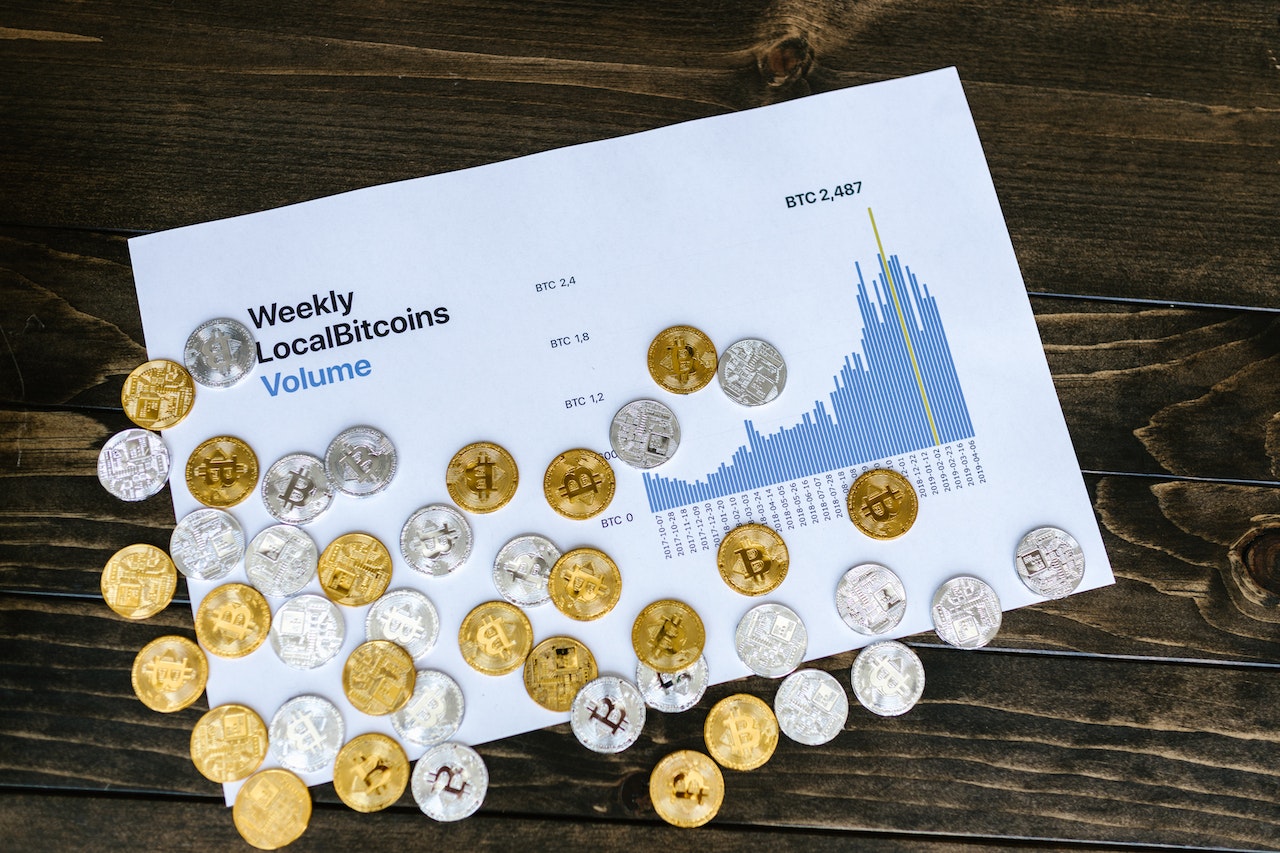
James Carter
How Do Cryptocurrency Companies Make Money?

There are many questions about how do cryptocurrency companies make money, so in this article, we will provide in detail on how cryptocurrency companies make money. (Also Read: 5 Must-Follow BTC Stocktwits)
Trading fees
Trading fees are charges a cryptocurrency exchange imposes for each trade on the platform. These fees can be a percentage of the trade value or a fixed amount, and they are one-way cryptocurrency exchanges make money. Trading fees can vary widely from one exchange to another, and they may also depend on the type of trade, such as either a market order or a limit order.
Some exchanges may also offer different fee schedules for different types of users, such as lower fees for users who trade high volumes or for users who hold a certain amount of the exchange’s native token. It’s important to carefully review the fee schedule of an exchange before making trades to understand how much you will be charged.
1. Charged on each trade made on the cryptocurrency exchange platform: Yes, many cryptocurrency exchanges charge a fee for each trade made on their platform. These fees can be a percentage of the trade value or a fixed amount. For example, an exchange may charge a 0.1% fee on each trade, meaning that if you buy $100 worth of cryptocurrency, you will pay a $0.10 fee.
Some exchanges also offer different fee schedules for different trades, such as lower fees for users who trade high volumes or those who hold a certain amount of the exchange’s native token. These fees are one way that cryptocurrency exchanges can make money.
2. It Can be a percentage of the trade value or a fixed amount: Yes, cryptocurrency exchange fees can be a percentage of the trade value or a fixed amount. For example, an exchange may charge a 0.1% fee on each trade, meaning that if you buy $100 worth of cryptocurrency, you will pay a $0.10 fee.
Alternatively, the exchange may charge a fixed fee for each trade, such as $0.25 per trade, regardless of the trade value. Some exchanges may also offer a combination of these fees, with a percentage-based fee for smaller trades and a fixed fee for larger trades. It’s important to carefully review the fee schedule of an exchange before making trades to understand how much you will be charged.
Listing fees
Listing fees are charges imposed by a cryptocurrency exchange for the privilege of having a new cryptocurrency listed on the platform. These fees can be a one-time charge or an ongoing annual fee. Listing fees can vary widely from one exchange to another. They may depend on factors such as the perceived value of the cryptocurrency, the demand for the cryptocurrency on the exchange, and the resources that the exchange will need to devote to listing and supporting the cryptocurrency.
Some exchanges may waive listing fees for certain cryptocurrencies or offer discounts to certain types of projects, such as open-source projects or projects with a strong community of developers and users. It’s important to carefully review the listing fees of an exchange before attempting to have a new cryptocurrency listed on the platform.
1. Charged to list new cryptocurrency on the exchange platform: Some cryptocurrency exchanges charge a fee to list a new cryptocurrency on their platform. This fee can be a one-time or ongoing annual fee, and it is one way that exchanges can make money. Listing fees can vary widely from one exchange to another. They may depend on factors such as the perceived value of the cryptocurrency, the demand for the cryptocurrency on the exchange, and the resources that the exchange will need to devote to listing and supporting the cryptocurrency.
Some exchanges may waive listing fees for certain cryptocurrencies or offer discounts to certain types of projects, such as open-source projects or projects with a strong community of developers and users. Before trying to get a new cryptocurrency listed on an exchange, it’s essential to look closely at the listing fees.
2. Can be a one-time or ongoing annual fee: Yes, cryptocurrency exchange listing fees can be either a one-time or ongoing annual fee. A one-time listing fee is a charge imposed only once when the cryptocurrency is first listed on the exchange. An “ongoing annual fee” is a yearly charge as long as the cryptocurrency remains listed on the exchange.
The type of listing fee that an exchange charges may depend on factors such as the perceived value of the cryptocurrency, the demand for the cryptocurrency on the exchange, and the resources the exchange will need to devote to listing and supporting the cryptocurrency. Before trying to get a new cryptocurrency listed on an exchange, it’s essential to look closely at the listing fees.
Withdrawal fees
Withdrawal fees are charges a cryptocurrency exchange imposes for users to withdraw their cryptocurrency from the platform to a personal wallet. These fees are typically designed to cover the withdrawal’s cost, including the transaction fees associated with transferring the cryptocurrency from the exchange to the user’s wallet.
Withdrawal fees can vary widely from one exchange to another and may depend on factors such as the type of cryptocurrency being withdrawn, the withdrawal method, and the volume of withdrawals. Some exchanges may waive withdrawal fees for users who trade high volumes or hold a certain amount of the exchange’s native token. Before taking your cryptocurrency off an exchange, consider the withdrawal fees carefully.
1. Charged for users to withdraw cryptocurrency from the exchange platform to their wallet: Many cryptocurrency exchanges charge a fee to withdraw their cryptocurrency from the platform to a personal wallet. These fees are typically designed to cover the cost of processing the withdrawal, including the transaction fees associated with transferring the cryptocurrency from the exchange to the user’s wallet.
Withdrawal fees can vary widely from one exchange to another and may depend on factors such as the type of cryptocurrency being withdrawn, the withdrawal method, and the volume of withdrawals. Some exchanges may waive withdrawal fees for users who trade high volumes or hold a certain amount of the exchange’s native token. Before withdrawing your cryptocurrency from an exchange, you should look closely at the withdrawal fees to understand what you will be charged.
Mining fees
Mining fees are charges that are associated with the process of mining cryptocurrencies. Cryptocurrency mining involves using specialized computers to solve complex mathematical problems, which helps validate transactions on the blockchain and create new cryptocurrency units. Mining fees can take several forms:
1. Transaction fees: When a user sends a cryptocurrency transaction, they may include a fee to incentivize miners to include their transaction in the next block that is mined. These fees are paid to the miner who successfully mines the block, which can be a significant source of revenue for mining companies.
2. Block rewards: In addition to transaction fees, miners also receive a block reward for each block they successfully mine. This block reward is a fixed number of units of the cryptocurrency created with each block and is designed to incentivize miners to continue participating in the network.
3. Cost of electricity: mining for cryptocurrency takes a lot of computer power and energy, so mining companies also have to think about how much electricity they use when figuring out how profitable they are.
Mining fees are one way that cryptocurrency mining companies can make money. In addition to these fees, mining companies can make money by selling the cryptocurrency they mine.
Staking fees
Staking fees are associated with “staking” cryptocurrency on a proof-of-stake (PoS) blockchain network. In a PoS system, users can earn a return on their investment by “staking” their cryptocurrency to help validate transactions on the web. This process involves holding a certain amount of the cryptocurrency in a wallet and using it to help reach a consensus on the network by “voting” on the validity of transactions.
Cryptocurrency companies that offer staking services may charge a fee for their services. These fees can take several forms, such as a percentage of the staked amount or a fixed monthly fee. Staking fees may also depend on factors such as the amount of cryptocurrency staked and the length of time it is staked.
Staking fees are one way that cryptocurrency companies can make money. In addition to these fees, cryptocurrency companies can make money by earning returns on their staked cryptocurrency and selling it once it is released from the staking process.
Investment services
Investment services are financial products or services designed to help investors make good investment decisions. Some cryptocurrency companies offer investment products or services, such as cryptocurrency index funds or trading advice, and charge fees for these services. These fees can be a percentage of the managed assets, a fixed fee for each trade, or a subscription fee for ongoing investment advice.
Cryptocurrency investment services can be helpful for investors new to the cryptocurrency market or who need more time or expertise to manage their investments independently. But before you sign up for any investment service, you should consider the fees and terms and research to ensure the service is trustworthy and fits your investment goals.

Advertising
Advertising is the practice of promoting products or services to a target audience to generate interest and sales. Some cryptocurrency companies make money through advertising, either by selling ads on their platform or by using their platform to promote products or services.
Cryptocurrency companies selling ads on their platform may charge advertisers a fee to place an ad as a one-time or an ongoing fee for a certain period. The fee may depend on where and how visible the ad is, who it is aimed at, and how long the ad campaign lasts.
Cryptocurrency companies may also use their platforms to promote their products or services.
Advertising can be a good way for cryptocurrency companies to make money. Still, it’s essential to consider the costs and benefits of advertising and make sure that any advertising efforts are legal and follow the rules.
Merchandise sales
Merchandise sales are physical goods, such as clothing or accessories, that are branded with a company’s logo or other identifying information. Some cryptocurrency companies make money through merchandise sales, selling merchandise directly to consumers or through partnerships with retailers.
Cryptocurrency-branded merchandise can be an effective way for companies to promote their brand and generate revenue. It can also be a way for companies to build a community of loyal customers and supporters. But it’s important to think carefully about the costs and logistics of making and selling merchandise and ensure that any products you sell are of good quality and appeal to your target audience.
Conclusively all the above explanations provide the answer to how do cryptocurrency companies make money, so these cryptocurrency companies make a very good profit in various ways, as you have seen in our explanation above. (Also Read: How To Make Money On Cryptocurrency Arbitrage)
Latest
Blockchain
09 May 2024
Blockchain
19 Apr 2024
Blockchain
16 Jan 2024
Blockchain
31 Aug 2023
Blockchain
24 Jun 2023
Blockchain
24 Jun 2023













